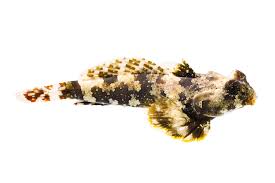The Dragon in Chinese Myths: Creation and Protection of the Nation

The dragon is one of the most powerful and pervasive symbols in Chinese culture, playing a significant role in myths, legends, and even daily life for centuries. In the vast tapestry of Chinese folklore, the dragon is not merely a creature of imagination but a symbol of imperial authority, strength, and protection. It is often intertwined with the origins, preservation, and defense of the Chinese nation itself, representing the harmony between the cosmos, nature, and human endeavor. In this article, we will explore how the dragon is featured in various Chinese legends about the creation of and the protection of the country, focusing on its representation as both a creator and guardian of the Chinese realm.
1. The Role of the Dragon in the Creation Myths of China
The dragon has long been associated with creation myths in Chinese tradition, where it plays a crucial role in the formation of the world and the establishment of Chinese civilization. One of the most prominent creation myths involving a dragon is the story of Pangu, the giant whose efforts helped create the world. According to legend, before the universe existed, the world was a chaotic, formless mass. It was Pangu, often depicted as a giant or a dragon-like being, who separated the heavens and the earth. His axe was said to have cut through the chaos, allowing order to emerge.
While Pangu is the central figure in this myth, dragons are believed to have contributed significantly to the formation of the earth, especially in shaping rivers, mountains, and oceans. The dragon’s control over water, rain, and clouds aligns it with the creative force in nature, suggesting that the dragon has a hand in shaping the very land on which Chinese civilization would arise. In this context, the dragon is not merely a mythical creature; it embodies the cosmic forces that made the Chinese world, bridging the gap between heaven, earth, and humanity.
In another creation myth, Nuwa, a goddess who is often depicted as a half-woman, half-snake or dragon figure, is said to have created humanity from clay. In the myth, Nuwa used her powers to repair the sky and prevent it from falling, after which she created humans to populate the earth. The use of a dragon-like entity to protect the sky and create life further solidifies the dragon’s role as an essential force in the formation and survival of the Chinese world.
Thus, in the creation myths of China, the dragon is an integral figure—powerful, protective, and involved in shaping the earth, the sky, and the first humans. The dragon’s connection to creation extends far beyond its association with the emperor and royal authority. It is a reminder of the cosmic balance that must be maintained in the world to allow civilization to flourish.
2. The Dragon as a Protector of the Nation
In addition to its role in creation, the dragon is also a vital symbol of protection in Chinese mythology. This protective role is most strongly associated with the imperial dragon, a symbol that was closely linked to the emperor of China, who was often referred to as the “Son of Heaven.” The emperor’s divine right to rule was symbolized by the dragon, with its strength and ability to safeguard the realm.
A well-known myth that illustrates the dragon’s role as a protector of the nation is the story of the Yellow Emperor (Huangdi), one of the legendary rulers of ancient China. Huangdi, considered to be the progenitor of Chinese civilization, was said to have led his people to victory over various hostile tribes during his reign. The Yellow Emperor’s rise to power is often depicted in stories where he is aided by celestial beings, including the dragon, who provides him with divine guidance and protection.
In one version of the myth, Huangdi is said to have received the dragon’s breath (a symbol of power and protection) as a blessing, helping him unite the disparate tribes under his rule. The dragon, in this context, serves as a guardian spirit, ensuring the safety and success of the emperor and the empire. The symbolism of the dragon as a protector aligns with its status as a guardian of natural and spiritual order.
Moreover, the dragon was often seen as a guardian of the emperor’s palace and the imperial family. According to traditional Chinese beliefs, the emperor’s throne was protected by a dragon’s spirit, ensuring that only a rightful ruler could ascend. This connection between the dragon and the imperial throne reinforced the idea that the dragon was a divine protector, watching over not just the emperor but the entire empire.
3. The Dragon and the Defending of the Chinese Nation Against Invaders
Beyond its symbolic protection of the emperor, the dragon also has a historical role in defending China against invaders. Throughout China’s long history, the nation faced numerous challenges from foreign armies and rebel forces, and the dragon’s image was often invoked in times of war as a symbol of the country’s resilience and strength.
One of the most famous instances of the dragon’s role in defending China is the legend of Fuxi and Shennong, two early mythical rulers who were believed to have wielded the powers of the dragon. According to legend, Fuxi taught the Chinese people how to domesticate animals, fish, and farm, while Shennong introduced the use of medicinal herbs. Both of these rulers are often depicted with dragon-like features or attributes, symbolizing their leadership and protective power.
In the face of external threats, these figures, often depicted as half-human, half-dragon beings, were said to have summoned dragons to protect the nation. The dragon’s ability to control the elements, particularly water, made it an essential protector in times of war. In one legend, when invaders sought to destroy Chinese civilization, it was the dragon who stirred the waters, flooding the enemy forces and protecting the land from foreign domination.
This connection between the dragon and the defense of the nation persists in modern Chinese culture, where the dragon is still seen as a symbol of national strength and military power. During times of national crisis, the dragon serves as a reminder of the resilience and unity of the Chinese people, who are capable of withstanding any external threat.
4. The Dragon in the Formation of Dynastic China
The dragon’s significance in protecting the nation is also evident in the formation and preservation of China’s dynastic rule. In particular, the dragon is associated with the founding of some of China’s most powerful and influential dynasties, such as the Han, Tang, and Ming dynasties.
For instance, during the reign of the Han Dynasty, which lasted from 206 BCE to 220 CE, the dragon symbolized imperial power and was often depicted on royal seals, banners, and coins. The first emperor of the Han Dynasty, Emperor Gaozu, adopted the dragon as a symbol of his authority and used it to legitimize his rule over the vast Chinese empire. The dragon, as a symbol of imperial power, was crucial to maintaining stability and unity within the empire.
The Ming Dynasty, which ruled China from 1368 to 1644, also adopted the dragon as a symbol of divine protection and imperial power. The Ming emperors, particularly Emperor Yongle, who oversaw the construction of the famous Forbidden City, used dragon imagery in the architecture and artwork of the palace, reinforcing the idea that the emperor was divinely protected by the dragon.
The use of the dragon as a symbol of imperial authority and national protection became deeply ingrained in Chinese culture, with each successive dynasty adopting and adapting the symbol to fit their political needs. The dragon’s role as a protector of the nation was key to the stability and longevity of the Chinese state, as it helped to establish a sense of continuity and divine favor across different periods of Chinese history.
5. The Dragon and Its Role in Chinese Folklore and National Pride
The dragon’s significance in Chinese myths and history goes beyond the realm of kings and emperors. It has also played a pivotal role in shaping Chinese cultural identity and national pride. The dragon is a symbol of the Chinese people’s unity, strength, and resilience. It reflects the collective spirit of the nation, uniting people from diverse regions and cultures under the banner of a shared heritage.
In modern times, the dragon continues to be a symbol of pride and unity in China, particularly during significant national celebrations such as Chinese New Year and the Dragon Boat Festival. These festivals are not only a time for celebration but also an occasion for reflecting on the rich cultural history of China, with the dragon symbolizing the enduring spirit of the Chinese people.
The dragon’s role as a symbol of protection and creation is also seen in its continued use in Chinese art, architecture, and folklore. From the majestic dragon carvings in the Forbidden City to the vibrant dragon dances performed during festivals, the dragon remains a powerful reminder of China’s long and storied history.
Conclusion: The Everlasting Symbol of Protection and Creation
The dragon, as a symbol of both creation and protection, continues to play an essential role in the myths, legends, and cultural identity of China. From its involvement in the creation of the world to its role as a defender of the nation against invaders, the dragon represents the strength, resilience, and unity of the Chinese people. As both a creator and a protector, the dragon’s influence extends far beyond mythology, shaping the cultural, historical, and political landscape of China for millennia. It remains, to this day, an enduring symbol of the power and enduring spirit of the Chinese nation.

